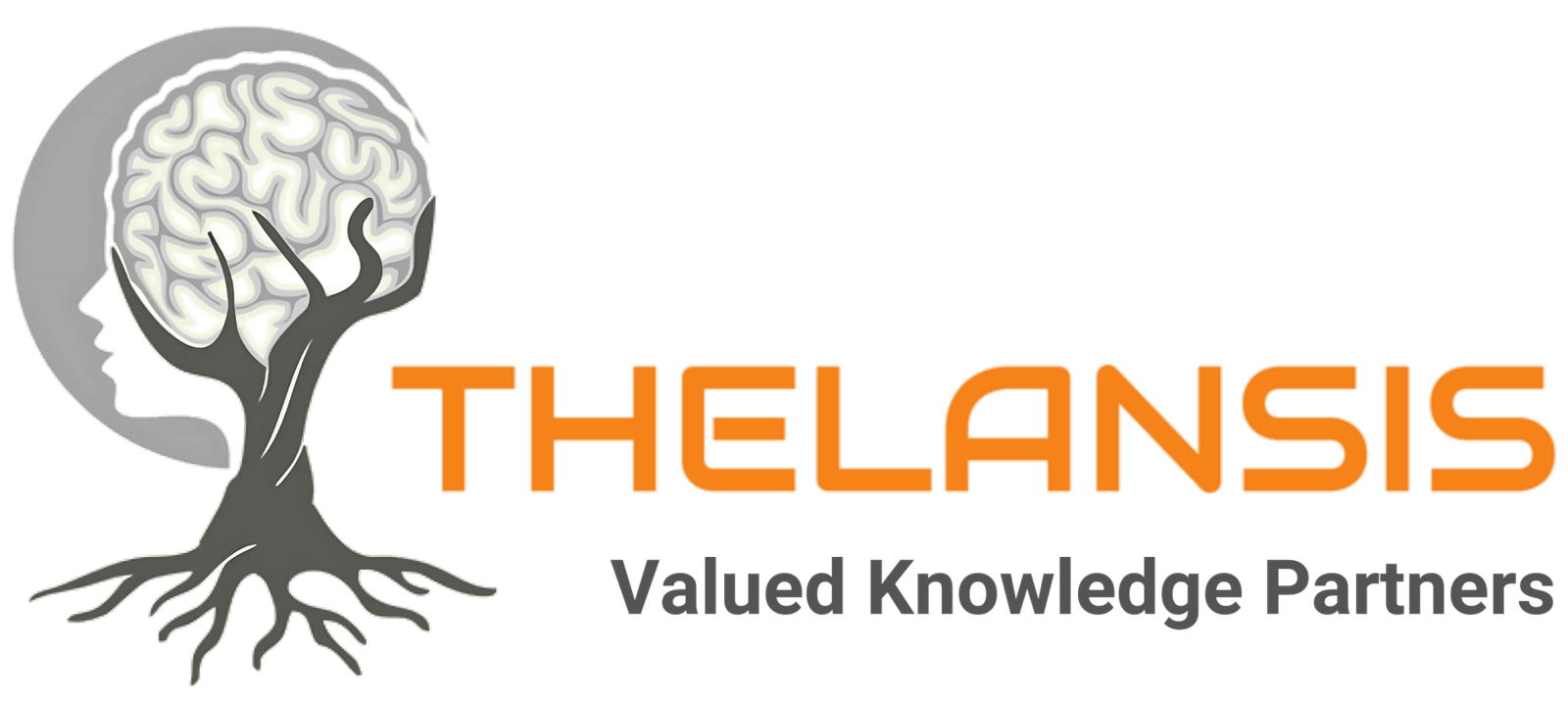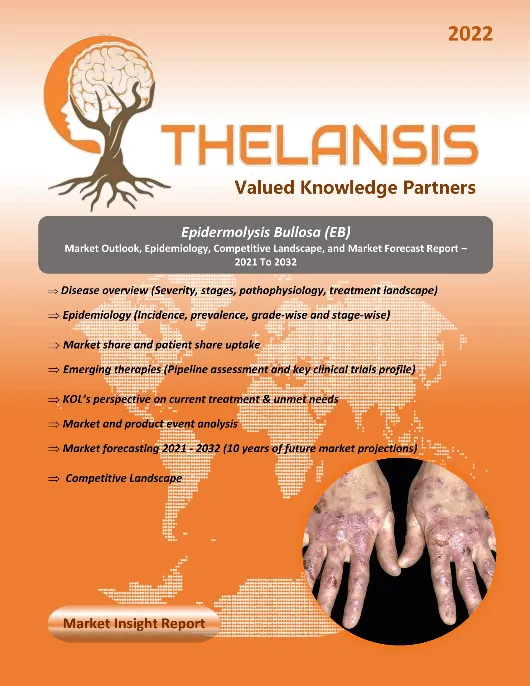Spinal Muscular Atrophy (SMA) – Epidemiology Insights and Forecast Report – 2020 To 2040
- Published Date : November 26, 2024
- Updated On : September 15, 2025
- Pages : 59
Spinal Muscular Atrophy (SMA) Epidemiology Insights
Thelansis’s “Spinal Muscular Atrophy (SMA) Epidemiology Insights and Forecast Report – 2020 To 2040″ provides an analysis of disease burden, characterized by disease definition, prevalence, incidence, diagnosed cases, severity, comorbidities, and clinical manifestations. Potential patient flow dynamics in disease burden are driven by shifts in demographic indicators and their correlation with age and gender distribution over time. Changes in the reported cases and long-term survival of patients may depend on diet, lifestyle, comorbid conditions, and the availability of interventions or therapies.
Spinal Muscular Atrophy (SMA) Overview
Spinal muscular atrophy (SMA) is a genetic neuromuscular disorder primarily characterized by the progressive, irreversible loss and degeneration of alpha motor neurons in the anterior horn of the spinal cord and brain stem, leading to profound, typically symmetric, muscle weakness and atrophy, most severely affecting the proximal muscles and eventually causing paralysis in severe cases. This condition is overwhelmingly caused by mutations or deletions in the Survival Motor Neuron 1 (SMN1) gene, which results in a deficiency of the critical SMN protein required for motor neuron health and function. The clinical severity of SMA, historically classified into subtypes (e.g., Type I, II, III, IV), exists along a continuous spectrum that is mainly influenced by the number of copies of the SMN2 “backup gene,” with higher copy numbers generally correlating with increased functional SMN protein and a milder, later-onset phenotype, though modern treatment using SMN-modifying therapies (e.g., antisense oligonucleotides, gene therapy) has revolutionized prognosis by directly addressing the underlying protein deficiency.
Geography coverage:
G8 (United States, EU5 [France, Germany, Italy, Spain, U.K.], Japan, and China)
Deliverables format and updates*:
- Access to an interactive epidemiology platform with downloadable Excel and PPT files.
- Global findings
- G8 findings
- Regional findings
- Country-specific findings
- Others*: regular updates, customizations, epidemiologist support
*As per Thelansis’s policy, we ensure that we include all the recent updates before releasing the content. Countries, subpopulations, and years of forecast can be customized as per client requirements.
Key business questions answered:
- 20-year historical and forecast data (2020–2040)
- Disease definition based on globally accepted and latest criteria (e.g., ICD-10 codes)
- Granular patient population coverage by year and geography
- Detailed segmentation by age, gender, subpopulations, comorbidities, line of therapies, etc.
- Patient funnels
- Country comparisons
- Relevant clinical variables (e.g., staging/classification/severity)
Insights driven by robust research and estimates:
- Published literature (e.g., peer-reviewed journal articles, registries, national surveys)
- Primary market research with KOLs
- RWD analysis using claims and EHR datasets
- Proprietary mathematical models (e.g., incidence-survival model; incidence- recurrence/progression-survival model)
Spinal Muscular Atrophy (SMA) Epidemiology Insights
Thelansis’s “Spinal Muscular Atrophy (SMA) Epidemiology Insights and Forecast Report – 2020 To 2040″ provides an analysis of disease burden, characterized by disease definition, prevalence, incidence, diagnosed cases, severity, comorbidities, and clinical manifestations. Potential patient flow dynamics in disease burden are driven by shifts in demographic indicators and their correlation with age and gender distribution over time. Changes in the reported cases and long-term survival of patients may depend on diet, lifestyle, comorbid conditions, and the availability of interventions or therapies.
Spinal Muscular Atrophy (SMA) Overview
Spinal muscular atrophy (SMA) is a genetic neuromuscular disorder primarily characterized by the progressive, irreversible loss and degeneration of alpha motor neurons in the anterior horn of the spinal cord and brain stem, leading to profound, typically symmetric, muscle weakness and atrophy, most severely affecting the proximal muscles and eventually causing paralysis in severe cases. This condition is overwhelmingly caused by mutations or deletions in the Survival Motor Neuron 1 (SMN1) gene, which results in a deficiency of the critical SMN protein required for motor neuron health and function. The clinical severity of SMA, historically classified into subtypes (e.g., Type I, II, III, IV), exists along a continuous spectrum that is mainly influenced by the number of copies of the SMN2 “backup gene,” with higher copy numbers generally correlating with increased functional SMN protein and a milder, later-onset phenotype, though modern treatment using SMN-modifying therapies (e.g., antisense oligonucleotides, gene therapy) has revolutionized prognosis by directly addressing the underlying protein deficiency.
Geography coverage:
G8 (United States, EU5 [France, Germany, Italy, Spain, U.K.], Japan, and China)
Deliverables format and updates*:
- Access to an interactive epidemiology platform with downloadable Excel and PPT files.
- Global findings
- G8 findings
- Regional findings
- Country-specific findings
- Others*: regular updates, customizations, epidemiologist support
*As per Thelansis’s policy, we ensure that we include all the recent updates before releasing the content. Countries, subpopulations, and years of forecast can be customized as per client requirements.
Key business questions answered:
- 20-year historical and forecast data (2020–2040)
- Disease definition based on globally accepted and latest criteria (e.g., ICD-10 codes)
- Granular patient population coverage by year and geography
- Detailed segmentation by age, gender, subpopulations, comorbidities, line of therapies, etc.
- Patient funnels
- Country comparisons
- Relevant clinical variables (e.g., staging/classification/severity)
Insights driven by robust research and estimates:
- Published literature (e.g., peer-reviewed journal articles, registries, national surveys)
- Primary market research with KOLs
- RWD analysis using claims and EHR datasets
- Proprietary mathematical models (e.g., incidence-survival model; incidence- recurrence/progression-survival model)
1. Key Findings and Analyst Commentary
- Key trends: market snapshots, SWOT analysis, commercial benefits and risk,etc.
2. Disease Context
- Disease definition, classification, etiology and pathophysiology, drug targets,etc.
3. Epidemiology
- Key takeaways
- Incidence / Prevalence
- Diagnosed and Drug-Treated populations
- Comorbidities
- Other relevant patient segments
4. Market Size and Forecast
- Key takeaways
- Market drivers and constraints
- Drug-class specific trends
- Country-specific trends
5. Competitive Landscape
- Current therapies
- Key takeaways
- Dx and Tx journey/algorithm
- Key current therapies – profiles and KOL insights
- Emerging therapies
- Key takeaways
- Notable late-phase emerging therapies – profiles, launch expectations, KOL insights
- Notable early-phase pipeline
6. Unmet Need and TPP Analysis
- Top unmet needs and future attainment by emerging therapies
- TPP analysis and KOL expectations
7. Regulatory and Reimbursement Environments (by country and payer insights)
8. Appendix (e.g., bibliography, methodology)
Table of contents (TOC)
1. Key Findings and Analyst Commentary
- Key trends: market snapshots, SWOT analysis, commercial benefits and risk,etc.
2. Disease Context
- Disease definition, classification, etiology and pathophysiology, drug targets,etc.
3. Epidemiology
- Key takeaways
- Incidence / Prevalence
- Diagnosed and Drug-Treated populations
- Comorbidities
- Other relevant patient segments
4. Market Size and Forecast
- Key takeaways
- Market drivers and constraints
- Drug-class specific trends
- Country-specific trends
5. Competitive Landscape
- Current therapies
- Key takeaways
- Dx and Tx journey/algorithm
- Key current therapies – profiles and KOL insights
- Emerging therapies
- Key takeaways
- Notable late-phase emerging therapies – profiles, launch expectations, KOL insights
- Notable early-phase pipeline
6. Unmet Need and TPP Analysis
- Top unmet needs and future attainment by emerging therapies
- TPP analysis and KOL expectations
7. Regulatory and Reimbursement Environments (by country and payer insights)
8. Appendix (e.g., bibliography, methodology)


